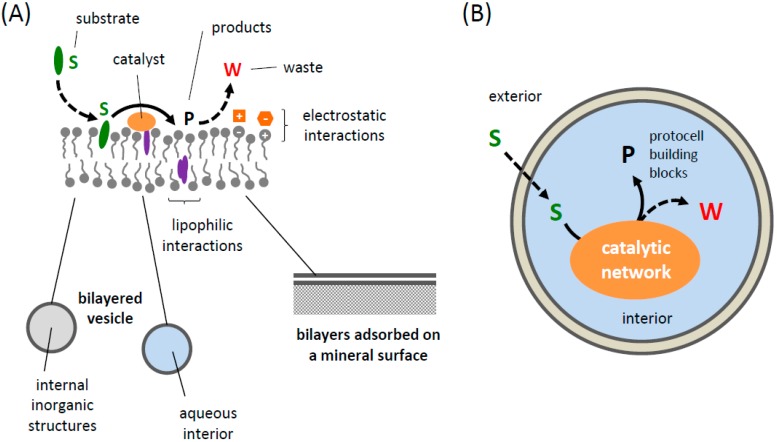Figure 2.
Design of protocells based on lipidic amphiphiles. (A) Interfacial bilayer systems, possibly as a boundary of a compartment system with an inorganic interior (bottom left), as a boundary of an organic vesicle with an aqueous interior (bottom middle), or adsorbed on a flat mineral surface (bottom right). The compounds that form catalytic networks can interact with the amphiphilic structure, either through a lipophilic association within the bilayers or by electrostatic interactions. In the former case, two categories of compounds exist, very hydrophobic molecules (hydrophobic chemicals or anchors are violet) that will be located within the hydrophobic core of the structures and molecules that are amphiphilic, i.e., compounds with a polar or charged moiety (hydrophilic compounds or moieties are in orange) and a hydrophobic moiety that can anchor them in the bilayers. (B) Encapsulation of water-soluble solutes within the aqueous lumen of a vesicular compartment (shaded in light blue). In (A), a direct access to substrates (in green) present in the external environment is possible. The B design requires the substrates (S, in green) to diffuse across the bilayers either through transient packing defects or via a partitioning into the bilayers. The reaction waste (W) is in red.

